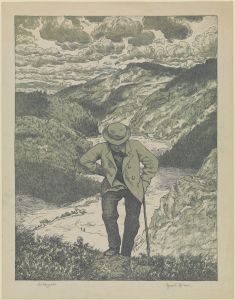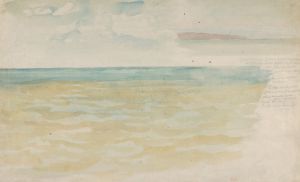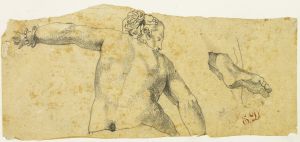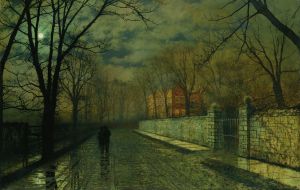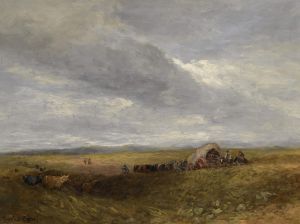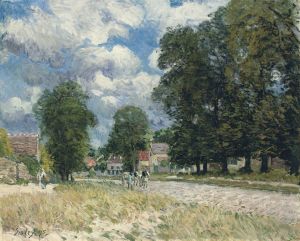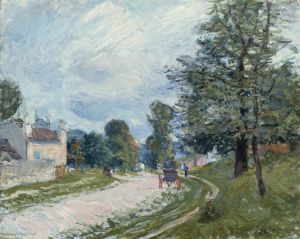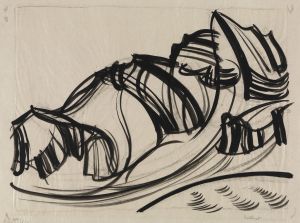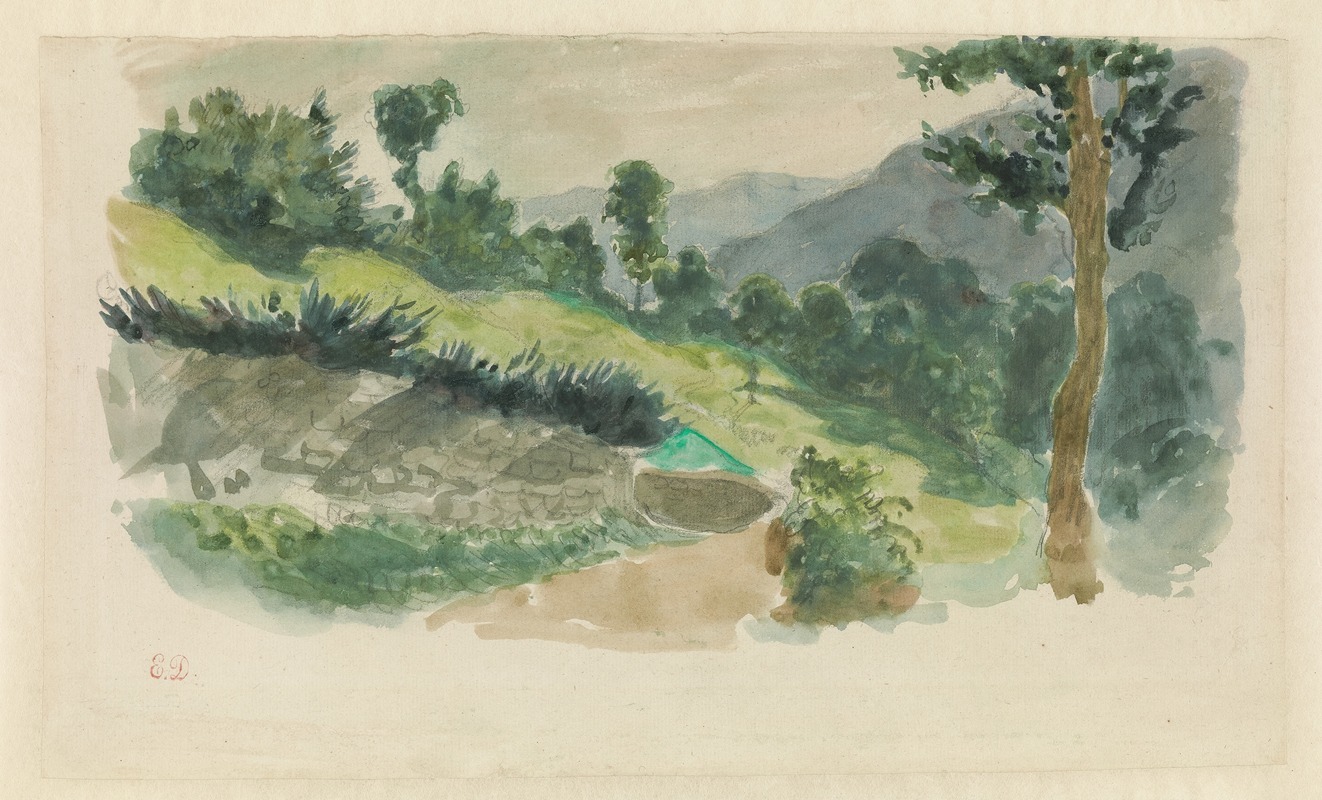
Path on the Side of a Mountain, Eaux-Bonnes, the Pyrénées
A hand-painted replica of Eugène Delacroix’s masterpiece Path on the Side of a Mountain, Eaux-Bonnes, the Pyrénées, meticulously crafted by professional artists to capture the true essence of the original. Each piece is created with museum-quality canvas and rare mineral pigments, carefully painted by experienced artists with delicate brushstrokes and rich, layered colors to perfectly recreate the texture of the original artwork. Unlike machine-printed reproductions, this hand-painted version brings the painting to life, infused with the artist’s emotions and skill in every stroke. Whether for personal collection or home decoration, it instantly elevates the artistic atmosphere of any space.
"Path on the Side of a Mountain, Eaux-Bonnes, the Pyrénées" is a painting by the renowned French Romantic artist Eugène Delacroix. Delacroix, born on April 26, 1798, in Charenton-Saint-Maurice, France, is often regarded as a leading figure of the Romantic movement in art. His works are celebrated for their vibrant color, expressive brushwork, and the dramatic intensity of their subjects.
This particular painting, "Path on the Side of a Mountain, Eaux-Bonnes, the Pyrénées," captures a scenic view of the Pyrenees, a mountain range that forms a natural border between France and Spain. The Eaux-Bonnes is a commune in the Pyrénées-Atlantiques department in south-western France, known for its picturesque landscapes and thermal springs, which were popular in the 19th century as a health resort.
Delacroix's interest in landscapes was part of a broader Romantic fascination with nature, which was often depicted as sublime and awe-inspiring. In this painting, Delacroix employs his characteristic use of color and light to convey the rugged beauty and dramatic terrain of the Pyrenees. The composition likely reflects his appreciation for the natural world and his ability to capture its essence on canvas.
The painting is an example of Delacroix's skill in rendering landscapes, a genre that, while not the primary focus of his oeuvre, still played a significant role in his artistic development. Delacroix was known to have traveled extensively, and his journeys often inspired his work. Although primarily celebrated for his historical and literary subjects, Delacroix's landscapes reveal his versatility and his keen observation of nature.
In terms of technique, Delacroix's brushwork in this painting is likely to be expressive, a hallmark of his style. He often used bold, dynamic strokes to create movement and energy within his compositions. His palette would typically include rich, vibrant colors, which he used to evoke mood and atmosphere.
While specific details about the creation and exhibition history of "Path on the Side of a Mountain, Eaux-Bonnes, the Pyrénées" are not extensively documented, it fits within the broader context of Delacroix's work during the 19th century. His landscapes, though less frequently discussed than his more famous works like "Liberty Leading the People," contribute to the understanding of his artistic range and his engagement with the natural world.
Delacroix's influence on later artists, particularly the Impressionists, is well-documented. His innovative use of color and expressive technique paved the way for future generations to explore new artistic directions. "Path on the Side of a Mountain, Eaux-Bonnes, the Pyrénées" exemplifies the qualities that made Delacroix a pivotal figure in the transition from traditional to modern art.
Overall, this painting is a testament to Delacroix's ability to capture the essence of a landscape with emotional depth and technical skill, reflecting the Romantic era's fascination with the power and beauty of nature.





